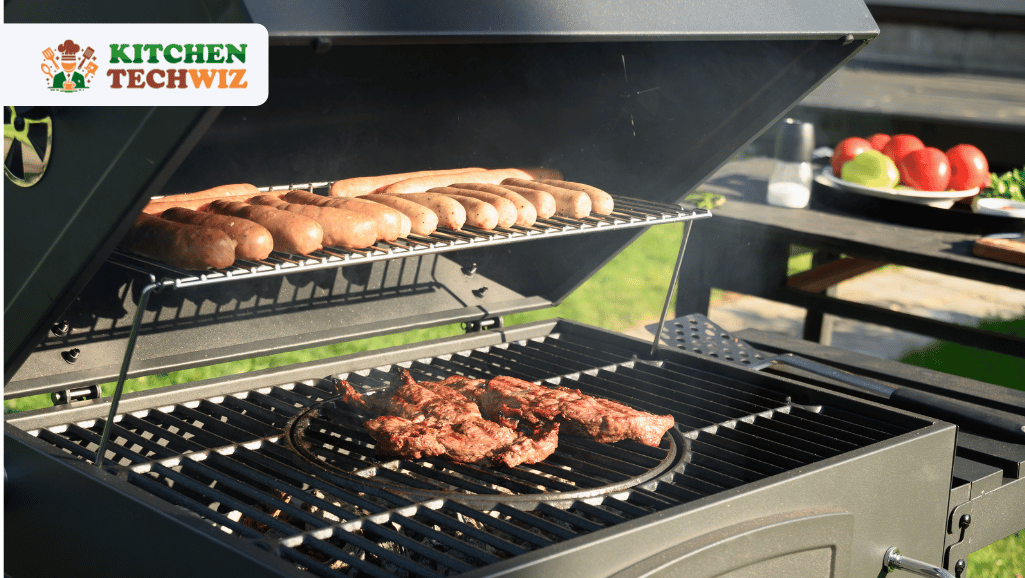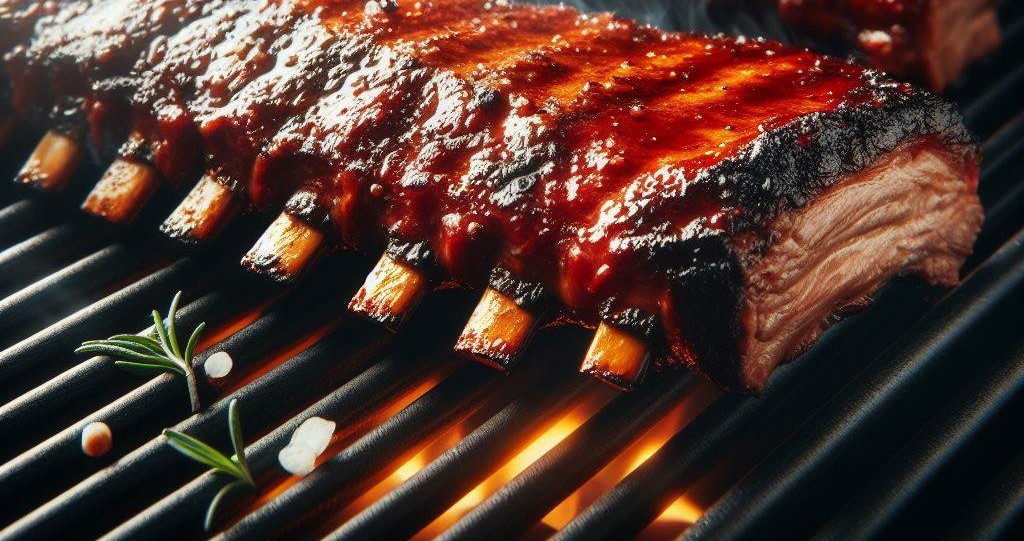Have you noticed a constant drip coming from your kitchen faucet? If so, you’re not alone. A leak can be a frustrating issue for many homeowners. Your kitchen faucet is likely leaking due to worn-out or damaged internal components such as the O-ring, valve seat, or cartridge.
In this blog post, we will explore common reasons why kitchen faucets leak, from issues with the faucet handle to problems with the faucet spout. Let’s dive into the world of leaks and get to the bottom of this common household issue.
Type of Common Faucets Leaking
Leaky Faucet Handle
If you notice water dripping or leaking from the handle of your faucet, it is likely due to a worn-out rubber washer or a faulty O-ring seal. Over time, these components can degrade, leading to water seepage around the handle area.
Faucet Spout Leak
A leak from the spout of your kitchen faucet can be an irritating problem, resulting in a constant drip or even a steady flow of water. This type of leak is often caused by a damaged worn-out washer. The valve seat, located inside the faucet body, can become corroded over time, causing water to seep out through the spout.
Compression Faucet Leak
Compression faucets are common in older faucet models. They function by tightening or loosening a rubber washer against a valve seat to regulate water flow. However, if the rubber washer or seat becomes corroded or worn, it can lead to a leak. When these components deteriorate, the faucet may drip or leak from the spout or handle area.
Dripping Kitchen Faucet
Dealing with dripping is not only annoying but also wasteful. This type of leak typically occurs when the rubber washer or O-ring within the faucet becomes worn or damaged. As a result, water continuously drips from the spout, leading to water wastage and increased water bills.
Cartridge-Style Faucet Leak
Cartridge-style faucets have a cartridge that controls the flow of water. Over time, the cartridge can wear down or become damaged, leading to leaks from either the handle or the spout of the faucet. If you notice water seepage around the cartridge area or dripping from the faucet, it is likely time to replace the worn-out cartridge.
Ceramic Disc Faucet Leak
Ceramic disc faucets feature two ceramic discs that control the flow of water. However, these discs can crack or become damaged over time, leading to leaks from the spout or handle of the kitchen faucet.
Why Does Faucets Leak Water from the Spout
A faucet leaking can be a persistent annoyance in any household, causing wastage of gallons of water and potentially leading to higher water bills. The reasons behind why faucets leak water from the spout can help in addressing the issue. Here are eight common causes of faucet leaks:
1. Worn-Out Washer
Within compression faucets, a rubber washer serves to create a watertight seal. Over time, this rubber washer can wear out, leading to a dripping faucet. Replacing the worn-out washer can often solve the problem.
2. Corroded Valve Seat
The valve seat connects the faucet and the spout. If this component becomes corroded due to mineral deposits or wear and tear, it can cause leaking around the spout. Cleaning or replacing it can resolve the issue.
3. Faulty O-Ring Seal
O-rings are small rubber discs that create a watertight seal in cartridge-style and ceramic disk faucets. If these are damaged, dirty, or worn-down, water can leak from the spout. Replacing the rings is usually the solution.
4. Loose Parts
Various components within a faucet, such as the handle screw, stem screw, or seat wrench, can become loose over time. This loosening can disrupt the proper functioning of the faucet and result in water leakage. Securing these parts can often stop the leak.
5. High Water Pressure
Excess water pressure can put strain on the faucet components, leading to leaks. Installing a pressure regulator or contacting a professional to adjust the water pressure can help prevent leaks.
6. Worn Cartridge or Ceramic Disk
Cartridge-style and ceramic disk faucets contain moving parts that can wear out over time. A worn cartridge or disk can result in a faucet leak, necessitating replacement to restore proper functionality.
7. Mineral Buildup
Hard water often leads to mineral deposits accumulating within the faucet, affecting its performance. Cleaning the faucet components with white vinegar or a descaling solution can help remove mineral buildup and prevent leaks.
Read: 14 Best Kitchen Faucets for Hard Water in 2024 [Expert Picks]
8. Damaged Faucet Body
In some cases, physical damage to the faucet body or spout can cause leaks. Inspecting the faucet for any cracks or defects and replacing the damaged parts can resolve the issue effectively.
How to Fix a Leaky Faucet DIY with a Simple Way?
Dealing with a leaky faucet can be a common household annoyance. However, with a bit of DIY know-how and the right tools, you can easily fix them yourself. Here is a simple guide to help you tackle the issue:
Prepare for the Task
Start by gathering all the necessary tools for the job, including a flat screwdriver, Phillips screwdriver, adjustable wrench, and possibly a hex key or Allen wrench. Additionally, have a towel or rag on hand to cover the sink drain and catch any small parts.
Shut Off the Water Supply
Locate the water shut-off valves under the sink and turn them clockwise to shut off the water supply. Then, turn on the faucet to drain any remaining water in the lines and relieve any pressure.
Identify the Faucet Type
Determine the type of faucet you have – whether it’s a compression faucet, cartridge faucet, ceramic disk faucet, or ball-valve faucet. Knowing the type will guide you on how to proceed with the repair.
Disassemble the Faucet
Use the appropriate tools to carefully remove the faucet handle, spout, and any other components necessary to access the internal parts. Take note of the order and placement of each part for easy reassembly.
Inspect for Damaged Parts
Examine the internal components, such as the rubber washers, O-rings, valve, or cartridge, for signs of wear, corrosion, or damage. These are common culprits of faucet leaks and may need to be replaced.
Replace Faulty Parts
Head to the hardware store to purchase replacement parts based on your findings. Consider using white vinegar to clean any mineral deposits or buildup that may be affecting the components.
Reassemble the Faucet
Carefully reassemble the faucet by following the reverse order of disassembly. Ensure all components are properly aligned and securely tightened to prevent any future leaks.
Test the Faucet
Turn on the water supply and test the faucet for leaks. Check both the hot and cold water handles to confirm that the leak has been successfully fixed. If you notice any leaks, double-check the connections and tighten them as needed.
Tools and Materials Required
Fixing a leaky kitchen faucet is a common plumbing issue that can be easily resolved with the right tools and materials. Here are some of the tools and materials you will need:
| Tool/Material | Purpose |
| Adjustable Wrench | Loosening and tightening nuts and bolts |
| Screwdrivers | Removing and replacing screws |
| Pliers | Gripping and turning small parts |
| Allen Wrench | Removing faucet handles or components with hex screws |
| Plumber’s Tape | Creating a watertight seal for pipes and fittings |
| Replacement Parts | Catching water during disconnection of the water supply |
| White Vinegar | Removing mineral deposits or limescale |
| Towels/Rags | Drying up water spills during the repair process |
| Bucket/Container | Catching water during disconnection of water supply |
| Safety Goggles and Gloves | Protecting eyes and hands during plumbing work |
Conclusion
A leaking kitchen faucet can be a frustrating issue to deal with. However, it is a common problem that can usually be resolved with some basic troubleshooting and repair techniques. It is important to identify the source of the leak, such as a faulty valve or a worn-out washer, and then take the necessary steps to fix it. If you are unsure or uncomfortable with attempting the repair yourself, it is always best to consult a professional plumber who can provide expert assistance.
FAQ
How can I fix a leak with two handles?
To fix a leaky faucet with two handles, you can start by turning off the water supply. Then, remove the faucet handles replace the faulty cartridges reassemble the faucet handles, and turn on the water supply to check for leaks.
What is the process to fix a leaky faucet with a single handle?
Begin by turning off the water supply. Next, remove the handle and replace the cartridge or rubber washer inside.
How can I connect a faucet adapter to a non-standard faucet without leaks?
Make sure you have the correct adapter size and type. Apply the plumber’s tape or a rubber gasket to ensure a watertight seal. Attach the adapter to the faucet firmly and test for any leaks by running water through it.
What steps should I take to fix a leaking old-fashioned kitchen faucet?
Start by turning off the water supply. Remove the faucet handles and inspect the valve seat and rubber washer for damage. If necessary, replace those.
Can a DIYer successfully fix a leaky faucet?
Yes, a DIYer can successfully fix it by following proper instructions and using the necessary tools and replacement parts. It’s important to have the right knowledge and take the necessary precautions to ensure a successful repair.



![16 Best Tabletop Propane Gas Grills 2024: [Also Charcoal & Electric]](https://kitchentechwiz.com/wp-content/uploads/2021/04/Best-Tabletop-Propane-Grill-1.jpg)

Leave a Reply